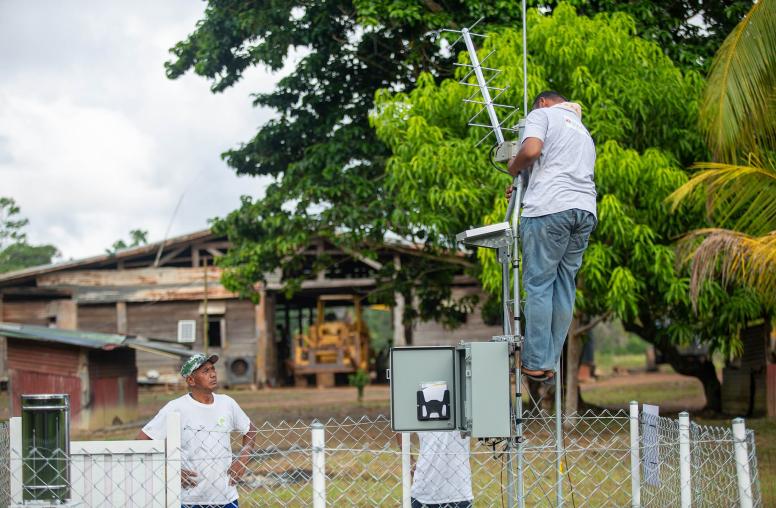Security and Social Developments in Kunduz
Long-standing social and political grievances, combined with an unresponsive, factionalized government and abusive militias, facilitated the Taliban’s capture of Kunduz in September 2015. The fall of Kunduz raised questions regarding future political and security implications across the northeast region of Afghanistan. This Peace Brief highlights findings from interviews with a range of actors comparing what the government’s political and security response should look like and what it’s expected to look like, as well as offering recommendations for government and civil society.
Summary
- Long-standing social and political grievances, combined with an unresponsive and factionalized government and abusive militias, facilitated the Taliban’s capture of Kunduz. Taliban messaging was relatively effective in using these grievances to their advantage.
- The Afghan government’s response seems to be largely military and security focused.
- However, the government must rebuild trust with the people of Kunduz, including civilian reform alongside any military response, to prevent further deterioration; but civil society skepticism of civilian reforms remains high.
- The government must also develop more robust anti-insurgency messaging.
- Civil society with deep roots in Kunduz should play a central role in rebuilding trust between communities as well as between civilian and government spheres.
- The international community should consider providing funds for the rebuilding of Kunduz but only under stringent conditions.
About this Brief
The Taliban capture of Kunduz in September 2015 raised questions regarding future political and security implications across the northeast region of Afghanistan. This Peace Brief highlights views from a range of actors comparing what the government’s political and security response should look like and what it’s expected to look like, as well as offering recommendations for government, civil society, and the international community. Peyton Cooke and Eliza Urwin are the senior program officers at USIP’s Kabul office.
Why Did Kunduz Fall?
Ongoing investigations and assessments are still trying to establish the factors that led to the temporary fall of Kunduz to Taliban control in late September and early October. However, at this point, certain key themes have begun to emerge from USIP field interviews with former government officials, civil society organizations, and security actors conducted throughout October.1 These interviews raise critical questions for Afghanistan’s future security.
The fall of Kunduz was not, generally speaking, a surprise. The Taliban and their allies had occu-pied multiple districts and villages in Kunduz for months, and sources inside and outside the govern-ment had been reporting on Kunduz’s plight for some time. What was lacking was not foresight but rather a proactive government response.
Social and political divisions heightened the likelihood of Kunduz falling. Poor coordination and communication between key political figures prevented them from implementing any joint response to Taliban threats. Ethnic divisions further undermined a broad-based response to the Taliban.2 Tajiks, and to a lesser extent Uzbeks, tend to dominate pro-state security forces in Kunduz (including thepolice and official or unofficial militias). Several interviewees indicated that these forces—militias especially—had a tendency to target Pashtun communities out of a combination of ethnic chauvinism and suspected support for the Taliban.
The combination of an unresponsive, factionalized government and a large number of abusive militias contributed to popular distrust of the Afghan state. As the Taliban took control of districts in Kunduz surrounding the city itself, public concern over the lack of government response was palpable. A significant number of people suspected state collusion with the Taliban. More prosaically, a large number of interviewees reported hearing instances of government forces selling equipment to the Taliban or coordinating the handover of checkpoints.
Taliban messaging was relatively effective. Rather than centering its messaging around the creation of an Islamic state, the Taliban focused on the Kabul government’s inability to defend Kunduz and protect its own interests. Interviewees tended to state that these messages were notably effective in instilling fear and doubt in the local population, lessening their desire and capacity to challenge the Taliban.
How the Government Should Respond: Views from Civil Society
There is general agreement regarding how civil society and the Afghan government should respond to the province’s fall. Interviewees especially emphasized the following:
To begin, respondents stated that the government needs to initiate, or continue, offensive operations against the Taliban. Many respondents blame the fall of Kunduz, in part, on the fact that key districts were allowed to become strongholds for the Taliban earlier in the year. They see renewed offensive operations in the surrounding districts as the only measure to ensure that the city does not fall again in the coming months and, crucially, as a measure to restore the credibility of the govern-ment and Afghan forces.
The government will need to accompany any military offensives with civilian reform. This reform should promote coordination among provincial government officials, particularly the Chief of Police and Governor. It should also promote accountability between district officials and their nominal supervisors at the provincial level. Many respondents were skeptical that government efforts—such as rewarding military officers involved in retaking Kunduz, replacing regional government officials, and setting up a commission of inquiry chaired by Amrullah Saleh and Farooq Wardak—would send the necessary messages or affect the necessary changes.
Reform efforts cannot stop with state reform alone. There must be efforts to rebuild trust be-tween the government and the people, as well as between population segments. Renewed military offensives and merit-based appointments could help, but the government would need to build on these efforts by increasing their messaging and other macro- and micro-level public outreach efforts. Interviewees described a government with essentially no outreach at all, which leaves a space for the Taliban and other insurgents to fill.
Civil society also has a crucial role to play. In addition to the breakdown between state-society relations, many interviewees report a deterioration of social relations in Kunduz. However, a number of nongovernmental organizations have maintained sufficient community relations to allow them to operate even in areas of Taliban control. Such civil society organizations thus have a crucial role to play in peacebuilding, dialogue facilitation, the joint identification of community priorities, and increasing government understanding of popular concerns. They can also serve as a convening authority for state-community dialogue, helping to ensure the genuine exchange of views and the establishment of relations on which future cooperation can be built.
The Expected Response of the Afghan Government
Interviewees, however, expect the government to focus mostly on security and were doubtful (though not entirely dismissive) as to whether broader governance reform would come to fruition. Here, again, the lack of clear and consistent government messaging appears to have undermined confidence: Even interviewees who are well connected with government officials stated they were largely in the dark about what the government intended to do in Kunduz.
Some interviewees did expect the government to begin to retake other areas of Kunduz from the Taliban, and operations seem to have begun at the time of writing.3 Most interviewees, however, expected a majority of Taliban forces to remain in Kunduz province during the winter rather than return to safe havens in Pakistan. In these interviewees’ estimation, the Taliban have already captured sufficient territory and supplies to winter comfortably in the province, and many believe that there may be another attempt to retake the city and possibly neighboring provincial districts.
Features of the expected government response have already been illustrated by two recent devel-opments: the elevation of Amanullah Guzar to zonal police commander for Afghanistan’s northern region4—comprising Samangan, Faryab, Jawzjan, Sar-e Pol, and Balkh provinces—and the announced expansion of the Afghan Local Police (ALP).5
Amanullah Guzar, a member of the Jamiat-e Islami political party, led antigovernment forces in northern Afghanistan during the war against Afghanistan’s Communist regime. Interviewees with a military or security background tended to be somewhat optimistic about this appointment, noting that Guzar is an effective military commander who can “get things done.” Others, particularly those from a civil society background, were more negative, noting Guzar’s reputation for brutality and expressing fear that Guzar, a Tajik, would persecute Pashtuns in the North—potentially undermining ethnic relations even further.
Around the time of Guzar’s elevation, the Afghan government also announced plans to expand the ALP by fifteen thousand men. A government-backed militia force nominally under the command of a given district’s chief of police, the ALP has a mixed reputation. Some interviewees noted that the ALP can be an effective anti-Taliban force, praising its performance in eastern provinces, such as Nangarhar. Yet even those interviewees who spoke positively about the ALP questioned its appropriateness in Kunduz, which is already beset by innumerable militias with a nebulous relationship to the Afghan state.6 They also noted that government and international forces frequently disregarded the ALP’s vetting procedures, allowing illegal militias to gain ALP status without background checks and other safeguards. They further proffered that Kunduz may lack the social, and particularly tribal, structures that could effectively supervise ALP forces and prevent them from preying on the local community when they should be protecting it.
Recommendations
- The Afghan state needs to take immediate steps to reestablish trust with the population of Kunduz. While trust building is always a slow process, in the short term the Afghan state needs to take visible, high-profile action to demonstrate its commitment to the security and well-being of Kunduz. Over and over again, interviewees related how the people of Kunduz felt the Afghan state had abandoned them. This feeling of abandonment almost certainly contributed more to the fall of Kunduz than any latent support for the Taliban.
- The Afghan state must take measures to improve its strategic communications. Before the Taliban took Kunduz, the government had neither communicated clearly that it was taking the situation seriously nor that it had developed a plan for the city. To the contrary, it seems to have conducted virtually no messaging at all—allowing even simple Taliban messaging to dominate. In a situation where many people in Kunduz seem to have viewed the state as badly uncoordinated and blatantly self-interested, communicating state plans and accomplishments becomes even more vital.
- Afghan civil society should begin designing trust-building and peacebuilding initiatives locally tailored to the Kunduz context. Given its technical expertise and relatively good reputation, Afghan civil society should, at this time, lead on trust-building initiatives with the sometimes antagonistic sections of the Kunduz population. Civil society organizations can also support the government in improving its messaging, in outreach to various Kun-duz communities, and in providing the government with ground-level social and political information. Funding should focus on those civil society organizations with significant history in the province and a proven ability to operate safely and effectively.
- The international community should consider making conditional funding available for the rebuilding of Kunduz. Because of its current fiscal position, the Afghan government probably does not have sufficient funding for trust-building or peacebuilding initiatives in Kunduz. However, any international funding should be conditional upon recipient organi-zations having deep roots in Kunduz and a genuine connection with the local population. Additional funding for security forces should be conditioned on those forces following rigorous vetting procedures and agreeing to abide by international human rights stan-dards. Finally, international funding of militia-type forces should support plans for their integration with Afghan security forces more generally.
- Any response must focus on the northeast region and not Kunduz alone. Neighboring provinces display different power structures, and lessons learned from Kunduz are not necessarily applicable. Nevertheless, a response focused exclusively on Kunduz may permit surrounding areas to become Taliban strongholds as insurgent forces vacate Kunduz, recreat-ing the conditions of the latter province’s recent fall. Both the government of Afghanistan and the international community must take broader regional issues into consideration when elaborating their response.
Notes
- All interviews were conducted anonymously given the sensitivity of the subject.
- Jonathan Goodhand and Aziz Hakimi, “Counterinsurgency, Local Militias, and Statebuilding in Afghanistan,” Peaceworks no. 90, United States Institute of Peace, January 2014, www.usip.org/sites/default/files/PW90-Counterinsurgency-Local-Militias-and-Statebuilding-in-Afghanistan.pdf.
- See Sayed Sharif Amiri, “Taliban Loses Key Kunduz Base In Dasht-e-Archi District,” Tolo News, November 16, 2015, www.tolonews.com/en/afghanistan/22363-taliban-loses-key-kunduz- base-in-dasht-e-archi-district.
- At the time of interviews for this Peace Brief, rumors circulated widely that Amanullah Guzar would be elevated to be security commander not of the North, but the Northeast, including Kunduz—thus interviewees’ focus on this appointment in particular.
- Mujib Mashal, “Afghan Plan to Expand Militia Raises Abuse Concerns”, New York Times, October 16, 2015, www.nytimes.com/2015/10/17/world/asia/afghan-local-police-taliban.html.
- On this issue, see Goodhand and Hakimi, “Counterinsurgency, Local Militias, and Statebuild-ing,” noting, amongst other points, that Kunduz has been unusually prominent in the founda-tion and expansion of Afghan militias.



